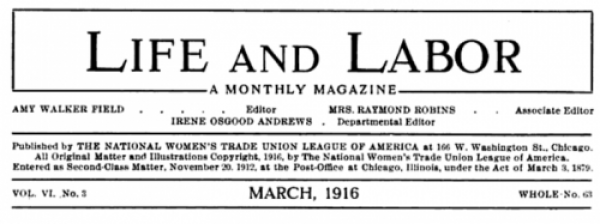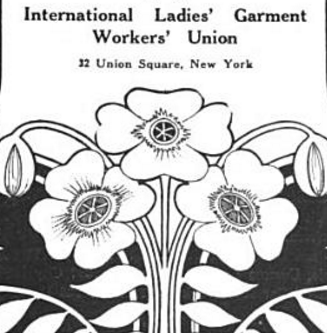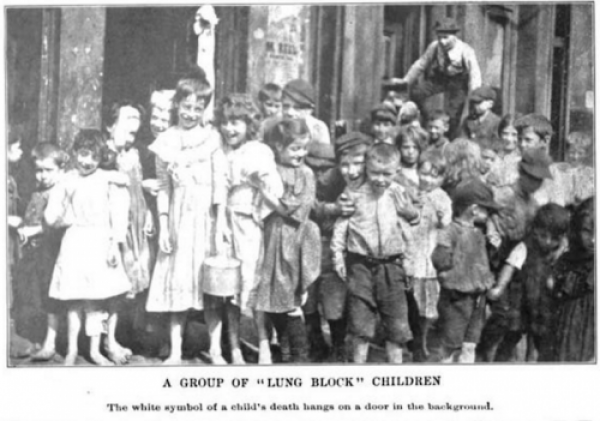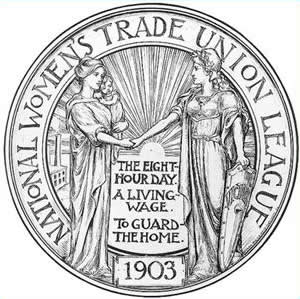Hellraisers Journal: Partial Settlement in New York City Garment Strike, Arrests Continue
Put on your fighting clothes.
-Mother Jones
~~~~~~~~~~~~~~~~~~~~~~~~~~~~~~~~~~~~~~~~~~~~~~~~~~~~~~~~~~~~~~~~~~~~~~~~~~~
Saturday February 19, 1916
New York, New York - Agreements Reached in Needle Workers Strike But Arrests Continue
From the Pittsburgh Daily Post:
Agreement Signed by
Garment Workers
-----NEW YORK, Feb. 18.-An agreement was signed today which it is believed will end the needle workers' strike in this city. It is expected that a majority of the 40,000 strikers will return to work within a few days, although some of the independent manufacturers have not signed the agreement.
The principal features of the agreement provide for "a preferential union shop," a working week of six days, with an aggregate of not more than 49 hours, and a maximum overtime of four hours, and a provision that Mayor Mitchel's council of conciliation shall be the final court of resort on any differences which may arise.
-----[Photograph added.]
From The New York Times:
ARREST STRIKERS IN FIGHT.
-----Police Seize Seven Men and Women at a Bronx Factory.Reserves of the Tremont Police Station were called to subdue a fight in front of the factory of the Kroll Embroider Company, 3,627 Third Avenue, the Bronx, yesterday. Striking lace and embroidery makers who quit their places in the Kroll plant two weeks ago, and who are affiliated with the International Ladies' Garment Workers, were blamed for the trouble.
The strikers, numbering about 100, were gathered about the gates when a dozen strikebreakers left the building at noon. Blows followed epithets, and stones and pieces of ice flew in all directions, breaking four large windows in the factory.
Policemen under Captain Wakefield dispersed the crowd after arresting seven men and women. Rose Dinda, 19 years old, of 351 West Fifty-fourth Street, and Michael Cardello of 341 East 146th Street were charged with malicious mischief and the five others with disorderly conduct. Cardello and Miss Dinda were held in $300 bail by Magistrate Koenig in the West Farms Court.
From The Pittsburgh Press of February 17, 1916:
The Fatalities Of Poverty
BROOKLINE, Mass., and East Orange, N. J., are famous for their beauty in that class of residential cities accurately described as wealthy. South Bethlehem, Pa., and Fall River, Mass., are not by any means beautiful, but they are famous as industrial towns, one for its steel and the other for its textile products. In the two beautiful cities the babies die at the rate of 76 and 78 per thousand annually; in the two manufacturing towns, at the rate of 233 and 229 per thousand annually.
The public health service of New York city found that among garment workers with annual earnings of $666 or more, child mortality was 114 while among those with annual earnings of $468 or less it was 200. Each year 100,000 babies are killed in the United States by the poverty of the parents, according to a recent report of the committee on industrial relations.
We are not attempting to prescribe a cure for poverty but we do believe that it is quite possible to save some of those 100,000 baby lives, and as a big step in the right direction we would suggest that every body boost the first national "baby week" which begins March 4 and concerning which full information may be secured by interested organizations from Miss Julia Lathrop, of the children's bureau of the department of labor at Washington.
[Photograph added.]
SOURCES
Pittsburgh Daily Post
(Pittsburgh, Pennsylvania)
Feb 19, 1916
https://www.newspapers.com/image/87445611/
The New York Times
(New York, New York)
-Feb 19, 1916 (3rd article)
http://query.nytimes.com/gst/abstract.html?res=9D03EFDD1F38E633A2575AC1A...
The Pittsburgh Press
(Pittsburgh, Pennsylvania)
-Feb 17, 1916
https://www.newspapers.com/image/143692180/
IMAGES
ILGWU, NYC, March 1916
https://books.google.com/books/reader?id=gsYUAAAAYAAJ&printsec=frontcove...
"Lung Block" Children, Bitter Cry of the Children by John Spargo, 1906
https://books.google.com/books/reader?id=jRtShCzm4ygC&printsec=frontcove...
`````````````````````````````````````````````````````````````````````````````````````````````````
Life and Labor Reports on Strike Victories


VICTORY has rewarded the struggle of the Boston waist and dress makers, who for some weeks past have been on a general strike. Uniform agreements have been wrested from twelve independent shops, and from eighteen shops belonging to the Boston Waist and Dress Manufacturers’ Association, leaving only five shops still on strike. There is every reason to believe that the waist and dress makers of Boston will henceforth have a strong organization, and will succeed in holding the substantial gains which have been made toward putting their industry on a standardized basis.
Among the conditions provided for in the agreement of their organization (the International Ladies’ Garment Workers’ Union) are: The 50-hour week; Saturday half-holiday; time and a half for overtime; the union shop; equal distribution of work; a general wage increase; abolition of sub-contracting; price committees in the several shops, and a board of arbitration to which all grievances can be referred. There is also to be created a “Joint Board of Control” for “the establishment, regulation and enforcement of uniform standards through out the industry in the matter of wages, hours of labor, overtime, holidays, registration of apprentices, methods of fixing piece prices, and other similar purposes.” Thus the evils of competitive conditions among the workers are done away with, and what can be the most shamefully sweated of trades is turned into a well paid and healthful occupation.
STRIKES of one sort or another seem to be the order of the day throughout the East. The return to work of the 40,000 victorious waist and dress makers of New York is aiding the cause of the 8,000 embroidery workers who are out, in greatly increasing the demand for embroidered goods which are at present not being made. The workers on children’s dresses are in the midst of a struggle for better conditions, as are too some 8,000 wrapper and kimono workers, whose victory seems largely won.
The fighting spirit seems to have permeated widely divergent groups, for while a number of scrub-women in the downtown office buildings have after a brief strike raised their wages of $5.00 a week to $6.00. some 2,500 jewelers, whose wage is said in some cases to be nearly $100.00 a week, are out to enforce a demand for a 44-hour week, time and a half for overtime, and the abolition of piece-work. Sugar workers, milk wagon drivers, dock builders and clerks add to the stream, which in all probability will shortly be increased by some 30,000 shirtmakers and 20,000 custom tailors. In fact, it is said that during one week in February there were more people on strike than at any time in the history of New York, with the exception of the week of 1913, when there occurred the great uprising in the needle trades.
[Photograph of W. T. U. L. Seal, paragraph break and emphasis added.]
SOURCE
Life and Labor
(Chicago, Illinois)
-March 1916
https://books.google.com/books/reader?id=ls49AQAAMAAJ&printsec=frontcove...
IMAGE
Seal of the National Women's Trade Union League
http://www.nwhm.org/online-exhibits/progressiveera/workingwomen.html
See also:
All for One
-by Rose Schneiderman with Lucy Goldthwaite
P. S. Eriksson, 1967
https://books.google.com/books?id=SQcFAQAAIAAJ
Note: Much of the credit for organizing the Boston waist and dressmakers for the ILGWU goes to Rose Schneiderman. And, indeed, in New York City, a massive strike of 60,000 workers did erupt in April of 1916 when the Joint board of Cloakmakers and the ILGWU issued a strike call. Stay tuned to Hellraisers Journal for further developments in the New York City needle-work trades.
`````````````````````````````````````````````````````````````````````````````````````````````````




